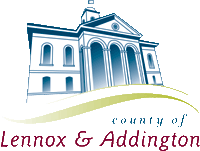
The Horse & Buggy Era (1880-1900)The Finkle Carriageworks |
|||
|
|||
A Finkle Snow Cutter, c.1900 |
By 1851, Henry Finkle, grandson of Henry Finkle, U.E., Bath, had located to Newburgh, Canada West. Henry and his wife Jane Ricaby, built a Greek Revival style house just west of the intersection of Concession and Main Streets, where a cluster of shops and services was developing. Their son, Clarence Hilton Finkle, was born the following year. Eight more children followed before Jane's death at age 41 in 1863. Henry remarried Martha Shibley. DISCOVER MORE![]()
As the prosperity of the surrounding farming community developed, industrial and commercial enterprises established in Newburgh. Newburgh was well situated for the development of industry. Here, the Napanee River branched offering thirteen potential industrial sites in less than a mile.
The Finkle Carriageworks, where Henry manufactured carriages and wagons, was situated along the north side of Factory Street. Water power was drawn from a dam across the northern branch of the Napanee River. By 1858, the year the village incorporated, Finkle was one of three carriagemakers serving the needs of the surrounding rural population.
By 1857, he was also operating a line of stage coaches in partnership with Madden, connecting the villages of Napanee, Kingston and Tamworth. Since, Newburgh, was inaccessible to lake schooners and steamers, and had also been unsuccessful in its bid for a station on the Grand Trunk Railway, Finkle's stage coaches provided vital links to the hinterland and larger centres.
Four domestics lived with Henry and Martha Finkle in 1871, including three members of the Lewis family, two of whom were employed as blacksmiths and one as a general labourer, and David Babcock, a stage driver. About 1881, Henry's son, Hilton, still living at home, joined the firm as a carriagemaker. Henry Hunter, an American immigrant, a young man about Hilton's age, also lived with the family, working a stage driver. By 1885, the Finkle complex included three frame factories and two blacksmith shops.
In 1885, Hilton married Helen Spafford. Their brick Italianate house with its projecting bay, built just west of his father's house, reflected the growing confidence of a young businessman. Hilton and Ellen employed two domestics, Joseph Scott, an English immigrant, who worked at the livery, and Maggie Webb, an Irish immigrant, to help with household chores. By the 1901 census, Joseph Scott was still working for the family and another servant girl, Anna Hicks, was employed.
The Finkle works escaped the disastrous 1887 fire which destroyed eighty four buildings along Newburgh's Main Street. Fred Bell, a Desmond farmer, recalled that C.H. Finkle made buggies, cutters, light and heavy sleighs. Several men were employed. By 1906, Hilton also employed three or four men to make harness. The cutter shown is finely detailed with stenciling, and applied moldings. The floor is lined with carpet, and the seat is tufted green velvet.
The same year, he was also operating a large livery at the corner of Mill and Grove Streets. Fred Bell recalled that Finkle kept twenty horses or more at the livery. He ran a stage route to Kingston by way of Camden East, Wilton and Odessa and also a stage route from Napanee to Kingston, often driving three horses abreast. On route, Hilton's stage coaches stopped at the Dominion Hotel, Odessa.
Hilton continued the trade until 1910. About then, Finkle started using a motor bus, the first in this area. By 1911, he had retired to Kingston, where on the 1911 census,he is listed as a "gentleman".
© Lennox & Addington County Museum & Archives
97 Thomas Street East, Napanee, Ontario, Canada K7R 4B9
Funding provided by the Government of Ontario and the County of Lennox & Addington




